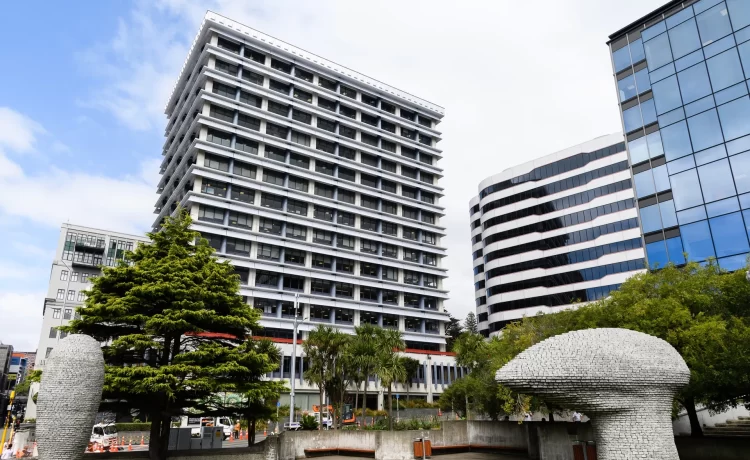Growth has been tepid since a deep recession in 2024 despite the the central bank’s aggressive easing cycle
[WELLINGTON] New Zealand’s central bank cut interest rates by 50 basis points and said that it is open to further reductions to stimulate demand as the economy struggles to grow. The local dollar fell.
The Reserve Bank of New Zealand’s (RBNZ) Monetary Policy Committee reduced the Official Cash Rate (OCR) to 2.5 per cent from 3 per cent on Wednesday (Oct 8) in Wellington, a move expected by 10 of 25 economists in a Bloomberg survey. Fifteen predicted a 25-point reduction.
“Economic activity through the middle of 2025 was weak,” the RBNZ said. “The Committee remains open to further reductions in the OCR as required for inflation to settle sustainably near the 2 per cent target.”
New Zealand’s economy shrank more than expected in the second quarter and business sentiment remains downbeat, casting doubts on the strength of a second-half revival. The slack in the economy means price pressures are expected to abate and return inflation to the middle of the RBNZ’s 1 to 3 per cent target band in 2026.
The New Zealand dollar dropped half a US cent on the statement. It bought 57.53 US cents at 2.20 pm in Wellington from 57.98 US cents immediately before the release. The yield on a policy-sensitive two-year bond fell seven basis points to 2.65 per cent.
The Kiwi dollar is the worst-performing G10 currency against the greenback in the past 12 months, falling 5.7 per cent as the RBNZ’s easing outpaces peers. It has now cut rates by 300 basis points since August last year. By comparison, the US Federal Reserve has eased 125 basis points since September last year, and the Reserve Bank of Australia has lowered its benchmark by just 75 points.
BT in your inbox

Start and end each day with the latest news stories and analyses delivered straight to your inbox.
Today’s decision was an interim rate review, meaning the bank did not issue new forecasts and will not hold a press conference.
Growth has been tepid since a deep recession in 2024 despite the RBNZ’s aggressive easing cycle. Unemployment has risen to a five-year high of 5.2 per cent and the housing market is languishing.
In a dovish pivot in August, the RBNZ projected the OCR would drop to 2.5 per cent by the end of the year, saying the economy had stalled and stimulus was needed.
But data later showed gross domestic product shrank 0.9 per cent in the second quarter, three times the decline the RBNZ had projected, fanning bets on deeper easing being required.
While the policy committee discussed a 25-point cut, the decision to take a larger step was reached by consensus, the RBNZ said.
Some members continue to put relatively more weight on the risk that excess precaution by households and businesses will persist, damping economic activity and employment, it said, adding “a larger reduction in the OCR could mitigate this risk”.
A confidence survey yesterday showed fewer businesses expect the economy to improve in the next six months, while they were also downbeat about trading conditions and hiring intentions. That suggests little or no growth in the third quarter and raises the risk of a recession, the New Zealand Institute of Economic Research said.
Some indicators “suggest that economic activity recovered modestly in the September quarter, but there remains significant spare capacity in the New Zealand economy”, the RBNZ said.
Inflation accelerated to 2.7 per cent in the second quarter, and the central bank said on Oct 8 that it will likely quicken to 3 per cent before slowing next year. Third-quarter inflation data is due Oct 20.
“There are upside and downside risks to the inflation outlook in New Zealand,” the RBNZ said. “Cautious behaviour by households and businesses could slow the economic recovery, reducing medium-term inflation pressure. Alternatively, higher near-term inflation could prove to be more persistent.” BLOOMBERG





